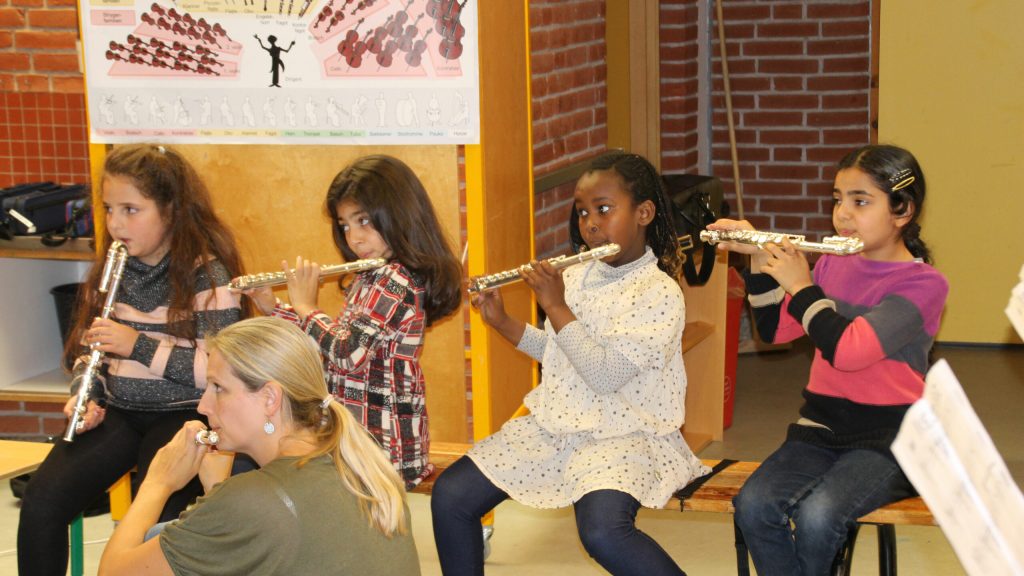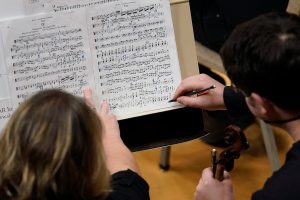Activating Artistry – Symphony

This is where teaching artists come in. They can activate the artistry in pretty much anyone, opening up an entire range of possible benefits, both instrumental and intrinsic—from better health outcomes in the senior living center to a deeper experience of Brahms’ Second Symphony.
Art for Art’s Sake? Or More?
That range of goals shows the wide embrace that teaching artistry brings. There’s been a long debate in the U.S. and other Western cultures about the purpose of art: “art for art’s sake” versus “art for practical purposes.” One camp celebrates the power of art to enrich life in ways nothing else can or ever has: Walter Benjamin described this as “a theology of art.” These devoted “people of the arts” want to protect that force from getting diluted or polluted by practical application, creating safe havens and the unfortunate by-product of ever-higher prices. The other camp recognizes the distinctive, sometimes unique, potential of art to create positive change in the world—an equally estimable cause, since the world could do with some improvement. “Art for art’s sake” is about the intrinsic enrichment that experiencing or making art brings to our lives and cultures. “Art for positive change” is about the many benefits that the arts can be instrumental in producing.
For a long time, these two positions were opposed and entrenched, arguing their respective merits in the court of public perception and to prospective funders. Funders care about both, which is why you see both in the goals teaching artists are hired to deliver listed above, but they have cared about art for art’s sake a whole lot more. That perspective has had far more power, more money, and more status—no wonder we refer to the “high arts” and build glorious temples for them. Art in the practical and everyday world is omnipresent but doesn’t get a capital “A” or the temples or the hefty funding.
Is this really an either-or, high-low, Art-vs.-art conundrum? Not according to a 2005 research report from the Wallace Foundation. Gifts of the Muse: Reframing the Debate about the Benefits of the Arts recognized that, obviously, both kinds of impact are valuable; society wants and needs both. Humans have always wanted and needed both. The report clarified the relationship between the two kinds of impact, concluding that you can only get the instrumental benefits if you go through the gateway of the intrinsic. In other words, humans have to experience artistry personally, in some way, in order to open the door for all those other more practical (and more measurable) benefits the arts can bring. Nobody buys a symphony ticket to improve the economic viability of their downtown. But if enough people have rewarding artistic experiences in the concert hall, they come back with friends, have dinner at a local restaurant, and support the downtown economy. No student tries to capture the drama of a scene about Frederick Douglass meeting Abraham Lincoln in order to improve their midterm test score, but if they pour their heart into the significance of that encounter and try to capture its drama in a scene they write, their test scores in American History go up. There is no shortcut; you can’t just skip to the practical payoffs of the arts without activating (and enjoying) the messier and less-conveniently measurable business of personal artistry.



